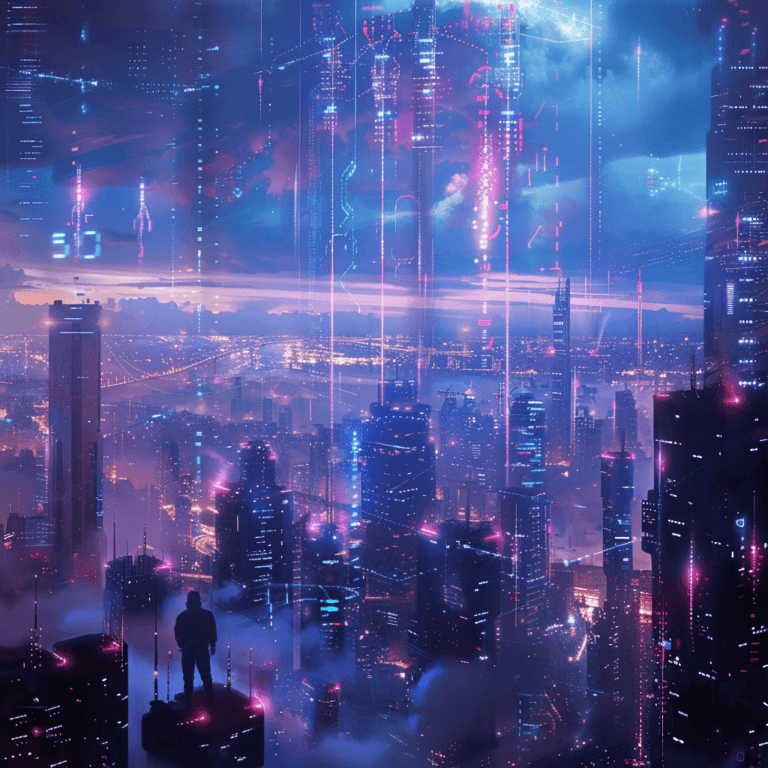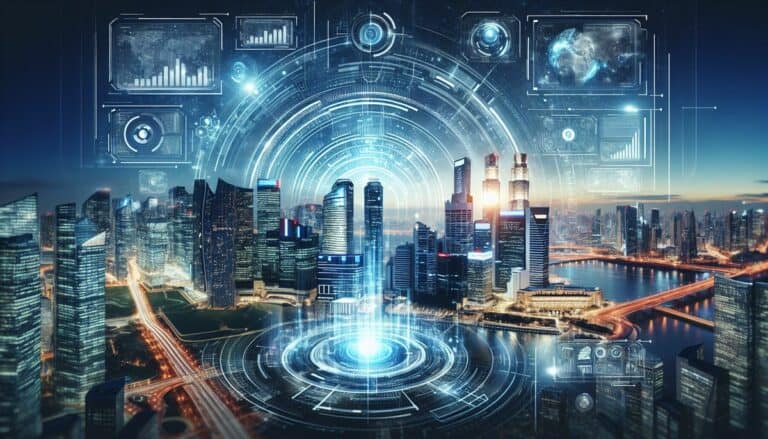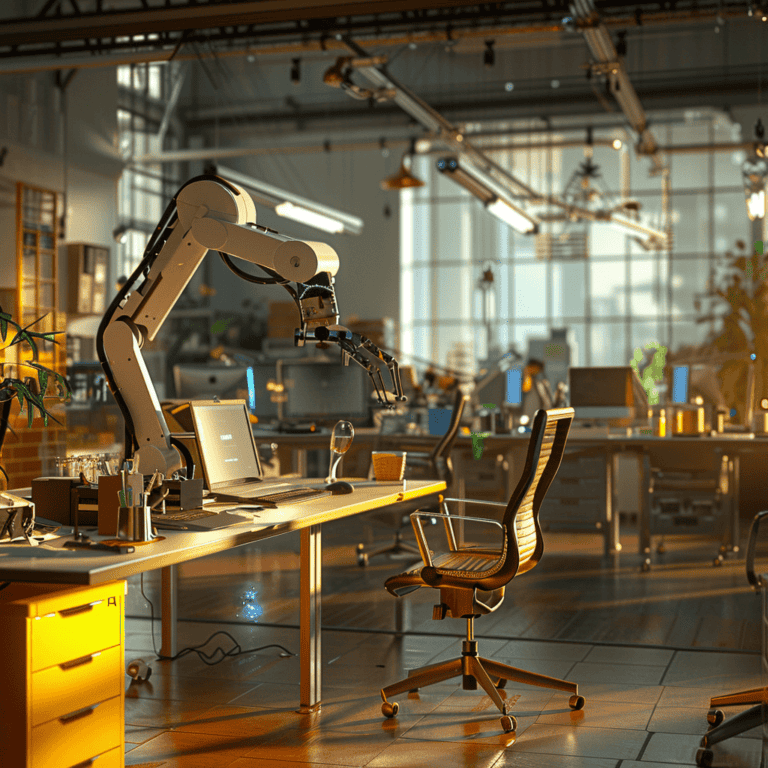The intersection of ‘I, Robot’ and artificial intelligence presents a fascinating exploration of human values in AI design and the collaborative potential between AI and art. As we delve into this intersection, we uncover the complexities of aligning AI with human values and the creative contributions of AI in various artistic fields. This article aims to shed light on these critical aspects and provide key takeaways for a deeper understanding of this intersection.
Key Takeaways
- Understanding human blueprint is crucial for addressing alignment and control problems in AI design.
- AI’s contribution to creative fields raises questions about the nature of creativity and the potential for collaboration between humans and machines.
- The evolving landscape of work in the context of AI and robotics highlights the impact on employment patterns and the rise of the gig economy.
Exploring Human Values in AI Design
Understanding human blueprint
When venturing into the realm of artificial intelligence, it is imperative to consider the human blueprint as a foundational element. The design of AI systems often grapples with the integration of human values, ensuring that these intelligent entities can operate harmoniously within our societal constructs.
- Alignment with human values: AI must be designed to reflect the ethical and moral standards of the society it serves.
- Emotional and intuitive capacities: Incorporating aspects of human emotion and intuition can lead to more relatable and effective AI.
- Error management: The ability of AI to learn from mistakes is crucial for its evolution and acceptance.
- Purpose and meaning: AI should be developed with a sense of purpose, contributing positively to human endeavors.
The dawn of intelligent robots and AI in robotics presents challenges and opportunities for businesses, requiring strategic adoption and fostering a culture of innovation.
Incorporating these human-centric features into AI design is not without its challenges. However, it is a necessary step towards creating systems that are not only technically proficient but also socially responsible and aligned with our core values. As we continue to push the boundaries of technology, it is essential to ensure that AI remains a tool for enhancement rather than a detriment to the human experience.
What’s Holding Your Business Back?
Discover the surprising roadblocks that could be costing you time, money, and growth.
Our expert assessment provides actionable insights and a clear roadmap to success. Get your personalized assessment and learn the exact steps you need to take to streamline operations, boost productivity, and achieve your goals.
Addressing alignment and control problems
In the realm of artificial intelligence, addressing alignment and control problems is paramount to ensure that AI systems operate within the intended parameters and ethical boundaries. The challenge lies in designing AI that can interpret and align with human values, while maintaining control over their actions and decisions.
- Identify Core Values: Establishing a clear set of human values that AI should adhere to is the first step in alignment.
- Mechanisms of Control: Implementing robust control mechanisms to prevent deviation from these values is crucial.
- Continuous Monitoring: Regular monitoring and updating of AI behavior to align with evolving human values and societal norms.
- Interdisciplinary Collaboration: Engaging experts from various fields to address the multifaceted nature of AI alignment and control.
Ensuring the alignment of AI systems with human values is not just a technical challenge but also an ethical imperative. It requires a concerted effort from designers, ethicists, and policymakers to create AI that enhances, rather than undermines, human welfare.
The integration of principles from neuromuscular control and human-robot interaction research can inform the development of more intuitive control systems. By understanding the underlying mechanisms of human control, AI can be designed to interact more naturally and safely with people, particularly in applications like neurorehabilitation and fall prevention for older adults. This approach not only improves the functionality of AI but also builds trust between humans and machines, fostering a collaborative environment where both can thrive.
The Intersection of AI and Art
Contribution to creative fields
The advent of Artificial Intelligence (AI) has ushered in a new era for creative fields, transforming the way art, music, and literature are produced and consumed. AI’s capabilities in replicating and augmenting human creativity have sparked a debate on the notions of scarcity and the unique role of human creativity.
The integration of AI in creative processes has not only streamlined workflows but also opened up unprecedented possibilities for innovation and expression.
Creative professionals now leverage AI to enhance their work, from automating mundane tasks to generating novel ideas. The impact of AI on creative fields can be summarized in the following points:
- AI-driven tools assist in the streamlining of creative processes, from idea generation to campaign execution.
- The abundance of creative work produced by AI challenges traditional economics of scarcity, raising questions about the value of human-composed art.
- The collaboration between humans and machines has led to a new form of co-creation, where both parties contribute to the final product.
As we continue to explore the intersection of AI and art, it is crucial to consider the implications of these technologies on the creative industry and the broader society.
Collaboration between humans and machines
The advent of AI in the workplace has ushered in a new era of collaboration between humans and machines, fundamentally altering the dynamics of creative and analytical work. By delegating tasks such as data processing and other routine computer-based work to AI agents, professionals can now channel their cognitive resources towards more complex and creative endeavors.
- Enhanced Productivity: AI handles repetitive tasks, allowing humans to focus on higher-order thinking and ideation.
- Synergistic Creativity: Machines and humans co-create, blending algorithmic precision with human insight.
- Adaptive Workforce: The modern job market demands adaptability, with AI reshaping employment patterns and the gig economy.
The integration of AI into our professional lives is not just a shift in task allocation; it represents a profound transformation in how we conceive work and creativity. The potential for growth is reminiscent of the industrial revolution’s impact, but with a focus on automating mental labor rather than physical.
As we reassess our roles in an AI-assisted world, it’s clear that the collaboration between humans and machines is not a competition but a partnership. This partnership is poised to redefine the boundaries of what we consider possible in both the creative arts and business innovation.
Conclusion
In conclusion, the intersection of ‘I, Robot’ and artificial intelligence presents a fascinating exploration of the relationship between human values and the design of AI. As we delve into the complexities of aligning robots with human values and preventing potential rogue behavior, it becomes evident that examining the blueprint of humanity offers valuable insights. The emergence of ideas of consciousness and the soul in AI development prompts us to reconsider the significance of human attributes such as emotions, intuition, and the pursuit of meaning and purpose. This reevaluation challenges the traditional assumptions about the role of ‘junk’ code in AI and highlights the potential for reciprocal altruism in both human and AI interactions. As we continue to advance AI technology, it is imperative to recognize the importance of integrating human values and ethical considerations into the design and programming of AI systems. By foregrounding the ‘junk’ code and leveraging it to inform AI development, we can foster a more harmonious and beneficial relationship between robotics, AI, and humanity.







